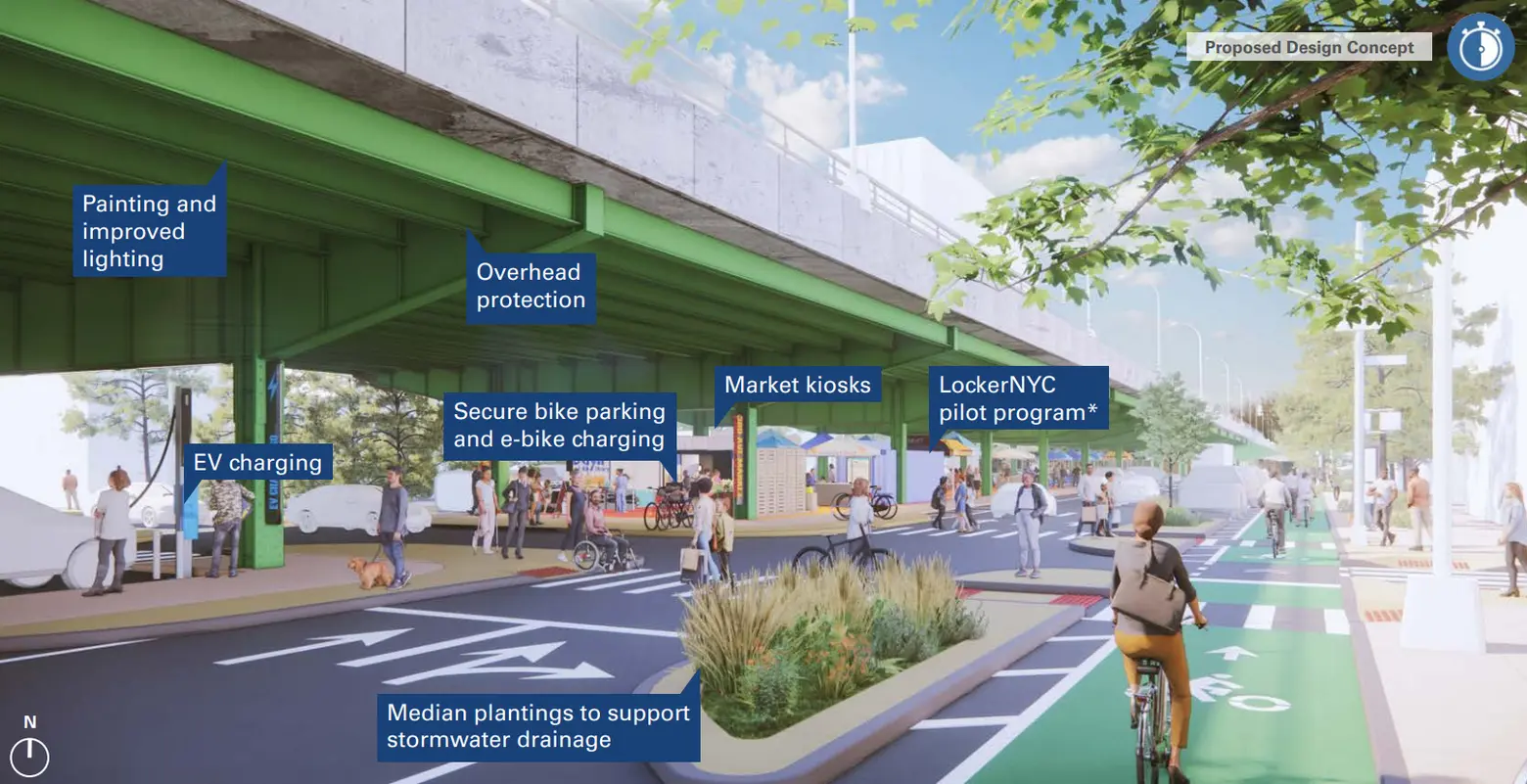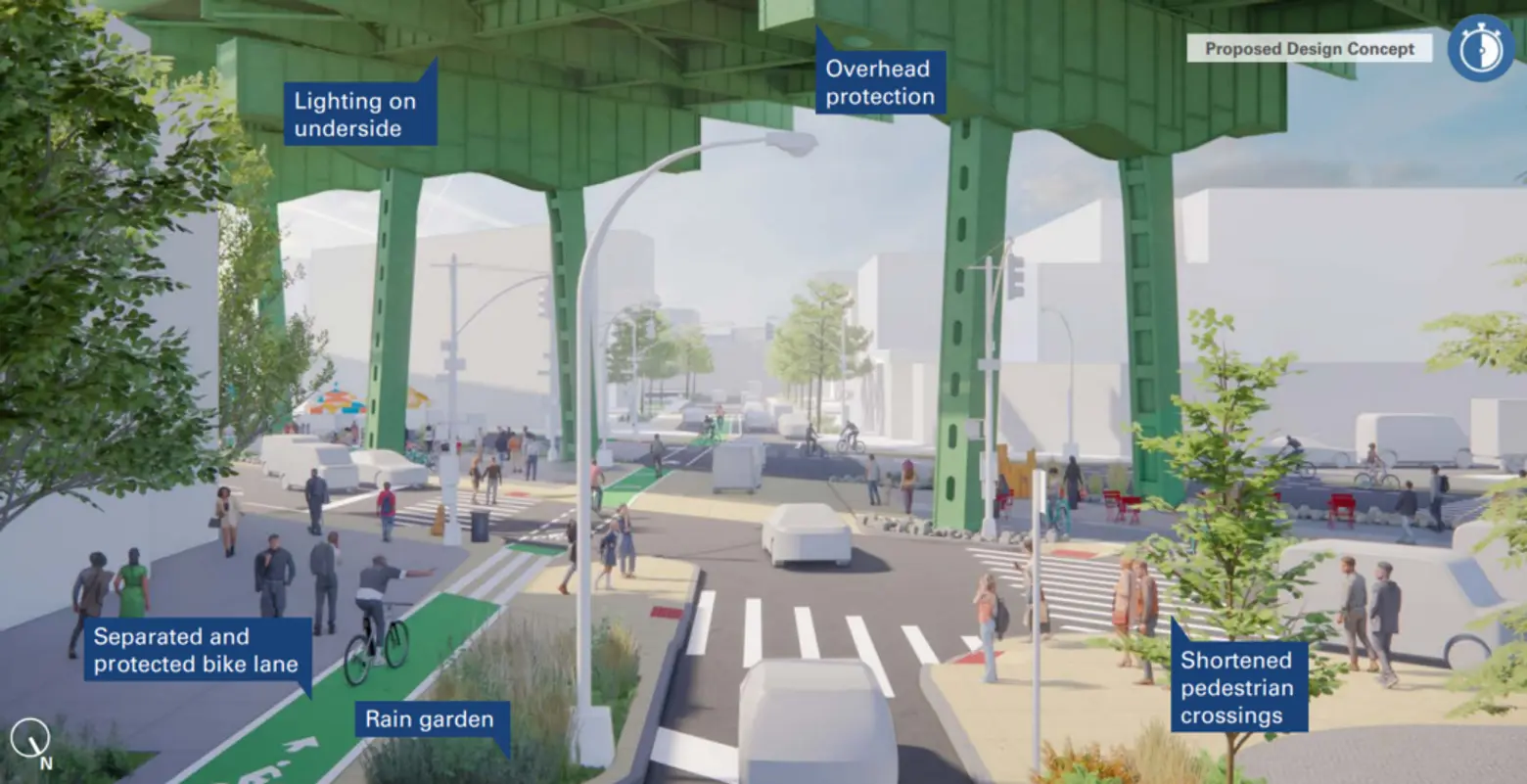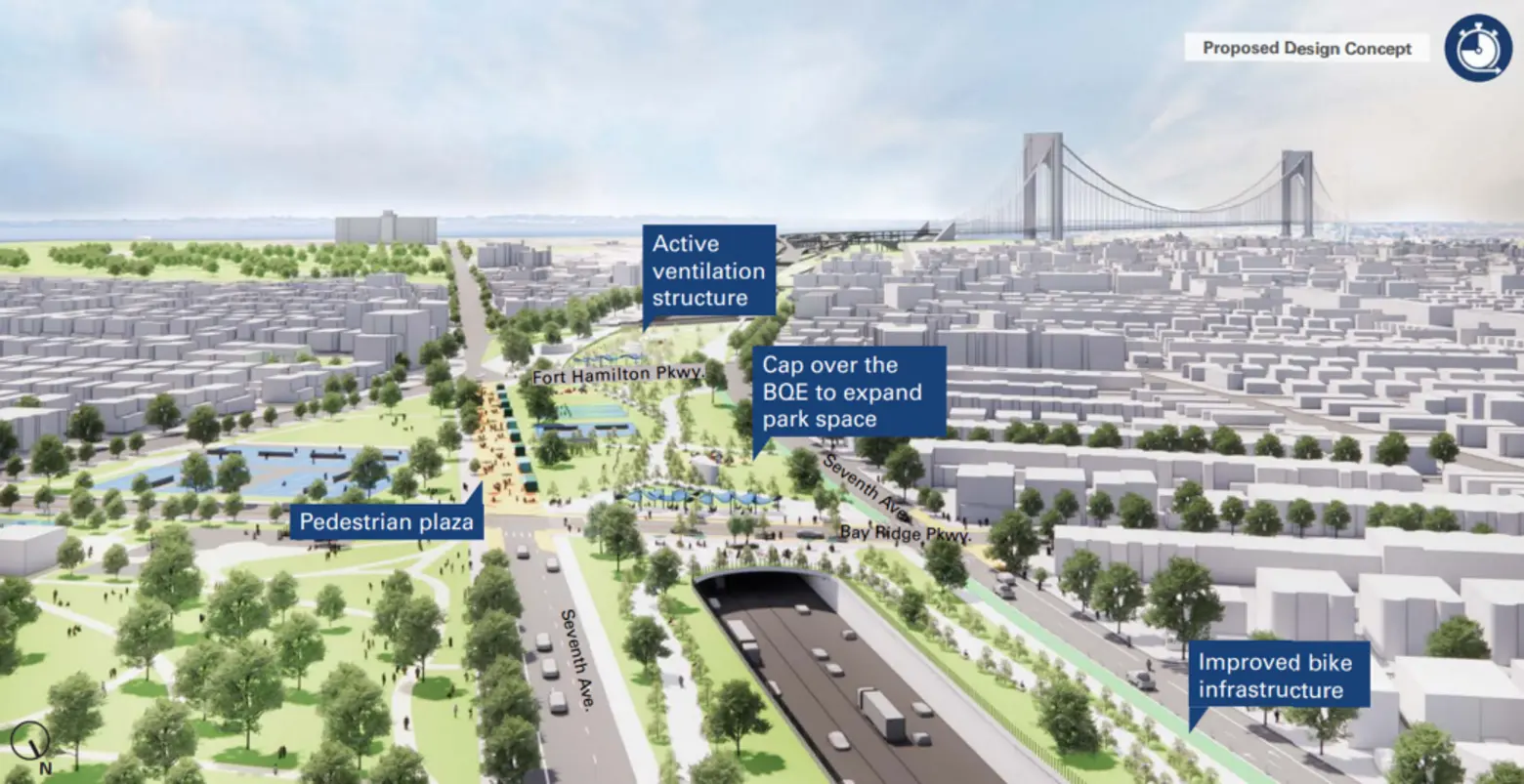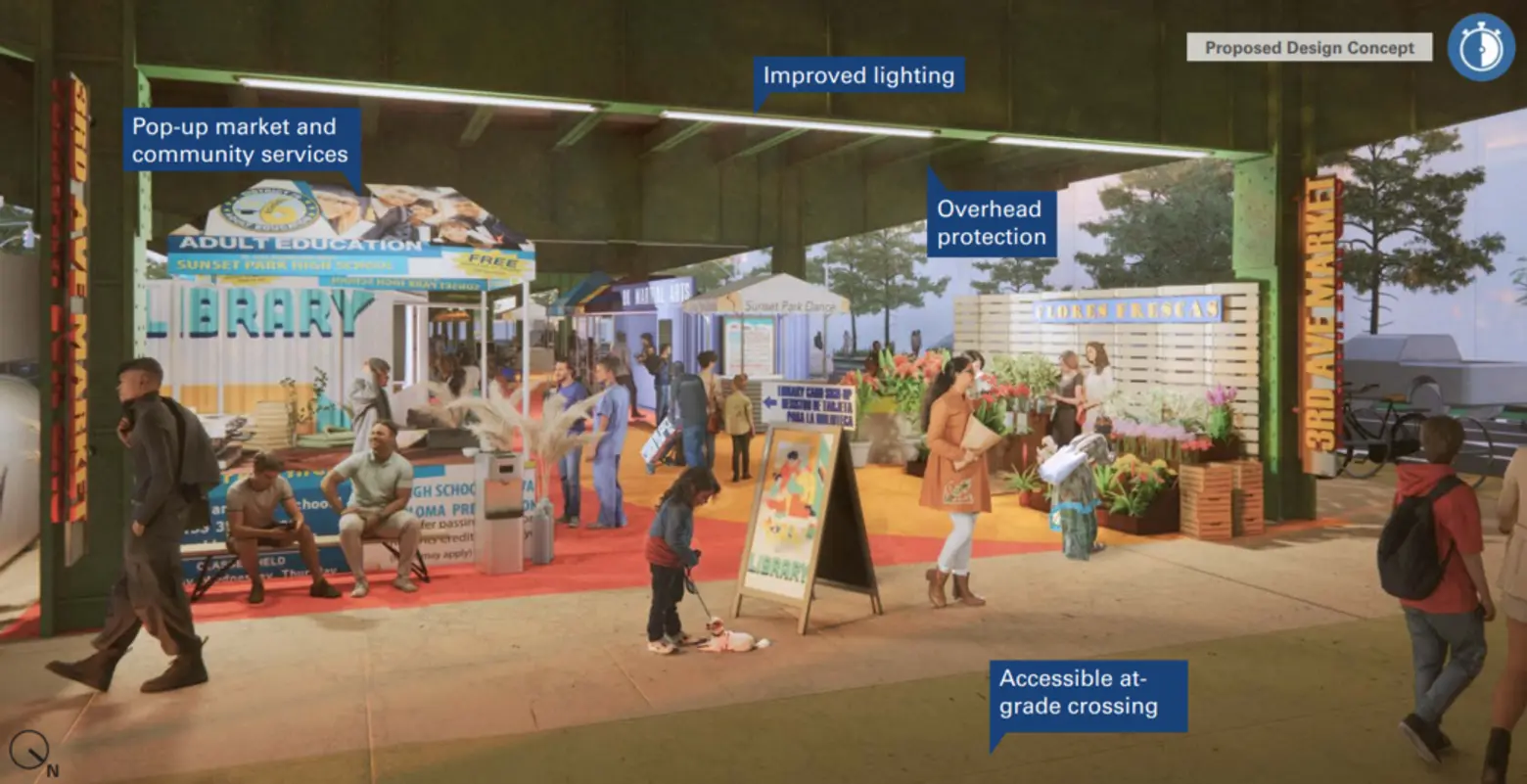NYC unveils proposals to turn dreary areas under the BQE into vibrant public spaces

Rendering of a proposed e-bike charging and storage hub for delivery workers. All rendering courtesy of NYC DOT
Decrepit, drab spaces beneath the Brooklyn-Queens Expressway could soon be transformed into vibrant public areas. The city’s Department of Transportation (DOT) on Wednesday published a report with proposals to convert a space under the BQE at Park Avenue in Fort Greene into an e-bike charging and storage station for delivery workers and to redesign a congested intersection at West 9th Street to improve pedestrian and cyclist safety. The report also proposed capping trenched sections of the BQE in Carroll Gardens, Williamsburg, and Bay Ridge to create parks and public spaces above the expressway.

The report details dozens of near-, medium-, and long-term proposals, which the public will provide feedback on.
The studies detailed in the report are funded by a $5.6 million federal grant through the Reconnecting Communities program, which aims to reconnect neighborhoods separated by Robert Moses-designed urban highways in the 20th century, such as those along the BQE.
The report comes as DOT officials continue to debate over how they should redesign the deteriorating triple-cantilever section of the BQE in Brooklyn Heights. Delayed for over five years, officials say they plan to begin construction in 2029.
“Today we are further than ever before, with big ideas in hand to reconnect communities along the north and south corridors of the BQE – directly from impacted communities,” Deputy Mayor for Operations Meera Joshi said in a statement. “We extend our deep thanks to local residents for their candor, and to the Federal government for a $5.6 million grant to study feasibility. We can now build to strengthen community bonds not break them as Moses did decades ago.”
According to the report, the BQE is a vital corridor for freight and mobility, serving over 150,000 vehicles daily and playing a crucial role in transporting people and goods across the tri-state area while keeping traffic off local streets.
However, despite being an essential traffic artery, the report acknowledges the negative impact of the expressway on the quality of life in adjacent areas.
“The BQE’s infrastructure has come at the expense of communities and neighborhoods alongside the highway: It acts as a physical barrier, divides neighborhoods and limits connections for pedestrians and bicyclists,” the report states. “The highway poses challenges to the safety, accessibility and environment of the communities it traverses.”

Although it is a long-term plan, capping portions of the BQE could improve connectivity between areas on either side of the corridor by creating parks and playgrounds, public space, and reducing noise and vehicle emissions from the expressway.
DOT officials are currently studying a cap for a four-block trench between Borinquen Place and Division Avenue, as reported by AMNY.

Other proposals include beautifying the corridor and making better use of the empty space that lies underneath, including e-bike charging and storage, and public space for vendors.
Marco Carrión, executive director of the Williamsburg environmental justice organization El Puente, told Gothamist that he wants city and state transportation officials to develop a unified plan and bring some of the renderings included in the report to life.
“We still have not yet seen a joint commitment from city and state DOT in pushing forward a comprehensive approach and transformative vision to this corridor that invests in alternative measures that make our communities healthier, safer and less dependent on this infrastructure,” Carrión said in a statement, as reported by Gothamist.
RELATED:
Interested in similar content?
Leave a reply
Your email address will not be published.


































E bike storage under a major road? What could go wrong with a;; those beautoful lithium ion batteries?